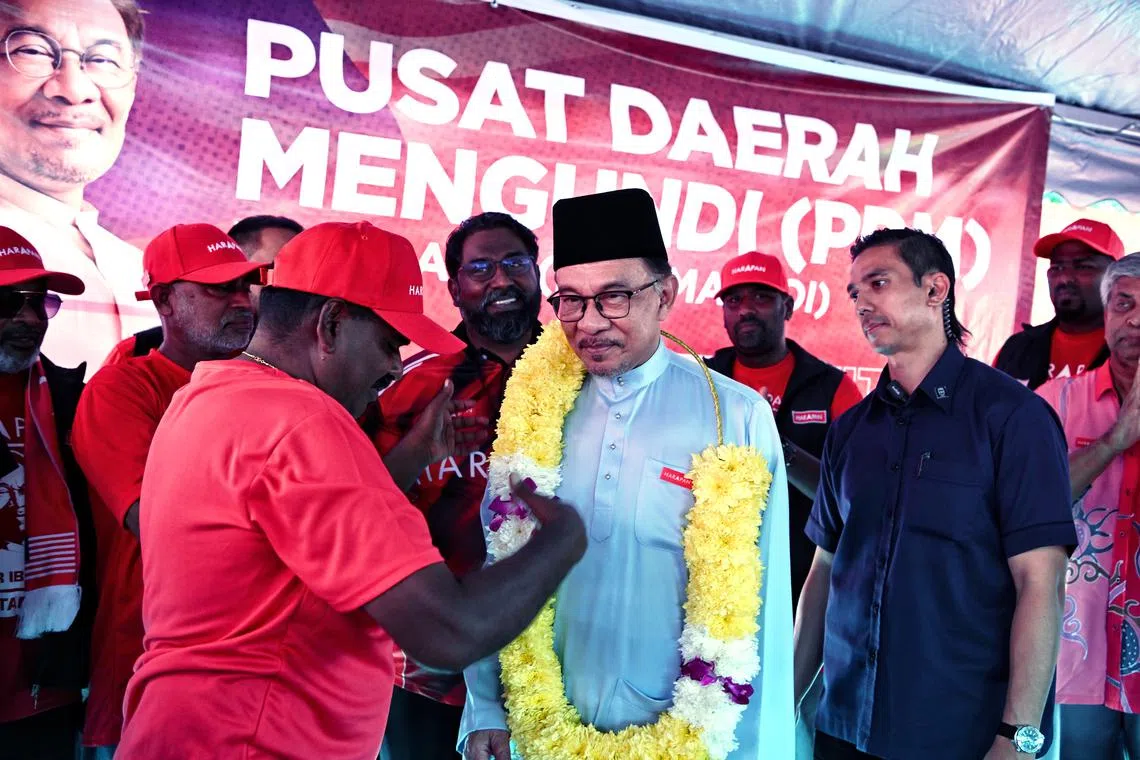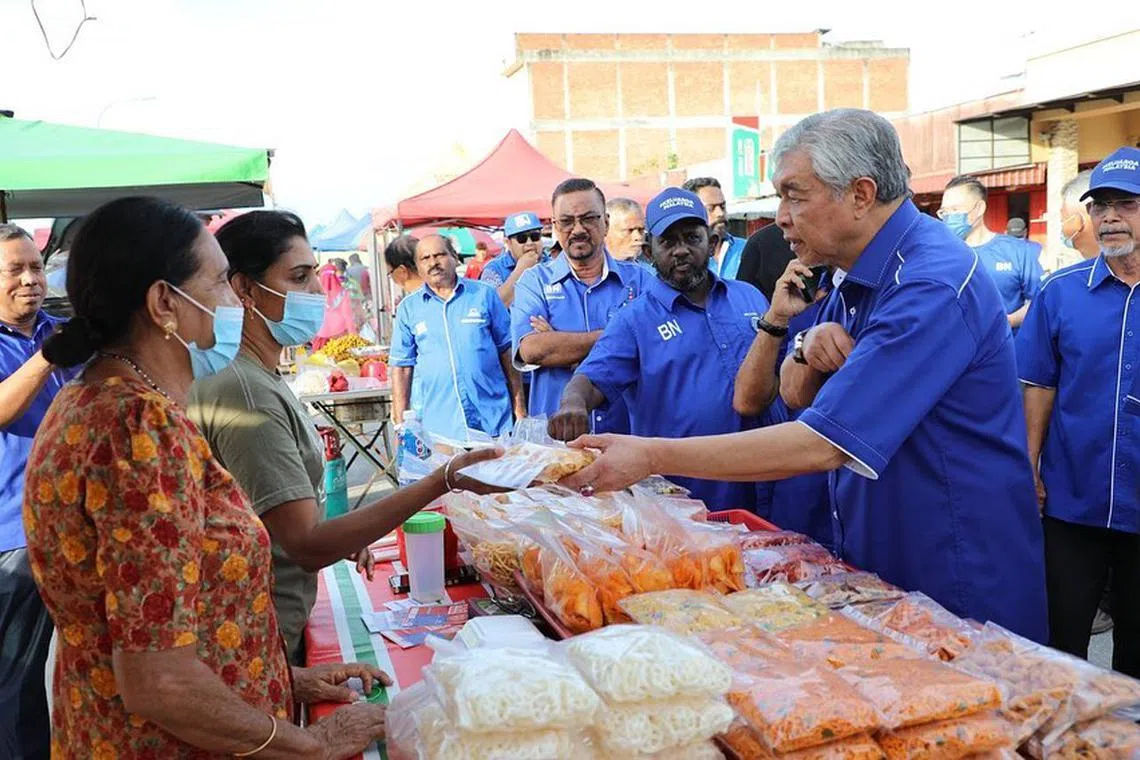Malaysia GE2022: States to Watch
Perak becomes microcosm for Malaysia’s fierce election battle
Sign up now: Get ST's newsletters delivered to your inbox
Follow topic:
BAGAN DATUK, Perak - Perak has become the bellwether state for Malaysia’s ongoing general election campaign, as leaders of Malaysia’s two major coalitions have opted to set their electoral base here.
Umno president Ahmad Zahid Hamidi and Parti Keadilan Rakyat (PKR) chief Anwar Ibrahim are both facing tricky parliamentary battles in the northern state of Perak,
The third major coalition vying for federal power in this election – Perikatan Nasional (PN) – is also fielding two of its top leaders in Perak. Its deputy chairman Ahmad Faizal Azumu and secretary-general Hamzah Zainudin face uphill battles to defend their incumbencies here.
Interest in Perak heightened a week before campaigning for the election got under way last Saturday, after Datuk Seri Anwar opted to contest in the parliamentary seat of Tambun,
Zahid is also facing a former deputy minister from PH in his long-held Bagan Datuk seat, and has seen his vote share dwindle over the past two elections.
“This could potentially be the last election where Anwar and Zahid Hamidi are leaders of their parties and coalitions,” Bower Group Asia deputy managing director Asrul Hadi Abdullah Sani said.
A major swing state, Perak is one of only three states holding simultaneous state legislative assembly elections along with the parliamentary elections, meaning control of the state government is also up for grabs. The state has 24 out of Malaysia’s 222 parliamentary seats. This is the second-largest number of parliamentary seats in Peninsular Malaysia, and fourth-largest nationwide.

PKR chief Anwar Ibrahim has opted to contest in the parliamentary seat of Tambun, Perak.
ST PHOTO: KUA CHEE SIONG
Ethnically diverse, Perak’s two-million-strong electorate comprises 51 per cent Malay voters, 34 per cent Chinese voters and about 12 per cent Indian voters, closely resembling the national average.
“Perak has become an important testing ground for both rural Malay votes and multiracial urban votes,” said Mr Asrul Hadi.
PH currently has 12 parliamentary seats in Perak, with BN holding nine and PN three seats.
However, only half of PH’s seats can be considered safe seats, while only one seat appears to be safe for BN, with the rest of the seats expected to see contests with narrow winning margins.
PN does not have a safe seat in Perak as all three of its incumbents won their seats under different tickets in 2018 before switching allegiances.

Perikatan Nasional Perak deputy chairman Ahmad Faizal Azumu (centre) with a supporter at a rally in Perak.
PHOTO: FAIZAL AZUMU/FACEBOOK
PH also has its work cut out to defend two seats it had won comfortably in the past – Lumut and Teluk Intan.
Over the past decade, the two coastal constituencies have seen rapid development that was initiated by BN parties, but the wards have mainly been represented by PH lawmakers during that period.

Umno president Ahmad Zahid Hamidi visiting the Hutan Melintang night market in Bagan Datuk District, Perak.
PHOTO: ZAHID HAMIDI/FACEBOOK
Incumbent Lumut MP Hatta Ramli – a former deputy minister who is also the secretary-general of PH component Parti Amanah Negara – won by only a 400-vote majority in 2018, and will again be facing BN secretary-general and former Perak menteri besar Zambry Abdul Kadir.
And despite his big win in Teluk Intan in 2018, PH’s incumbent candidate Nga Kor Ming has been criticised for not doing enough for the Indian community there. This may swing votes in favour of underdog Murugiah Thopasamy of BN party Malaysian Indian Congress.
This is the first time BN is fielding an Indian candidate in Teluk Intan, where Indian voters comprise around 20 per cent of the electorate – higher than the national average.


